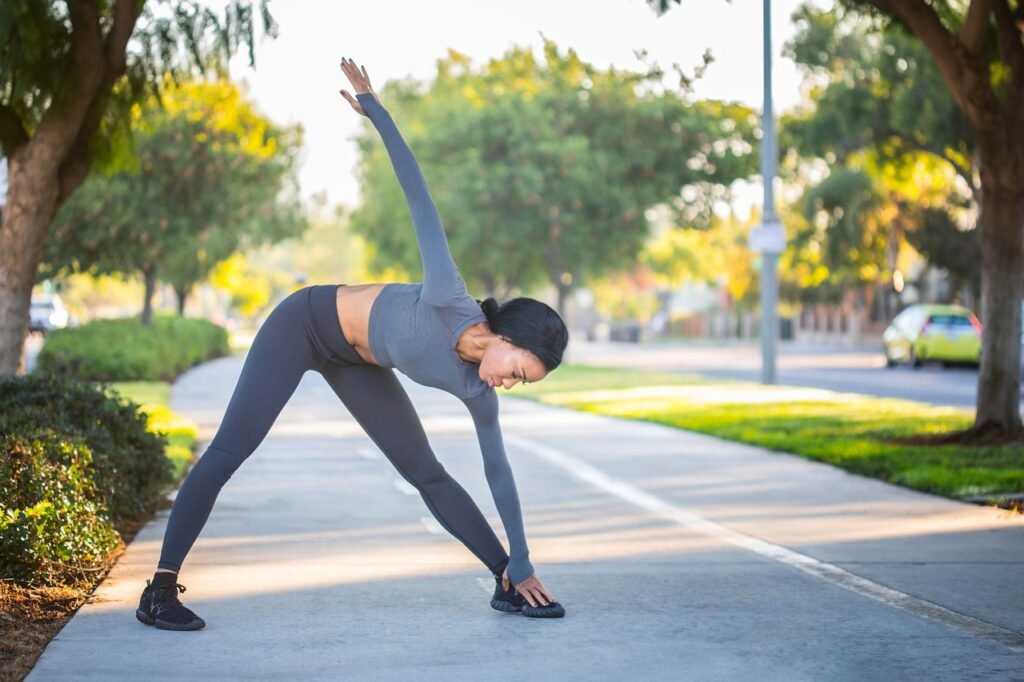Trikonasana (Triangle Pose)

How to do Trikonasana Pose (Triangle Pose)
As there are many benefits of doing Trikonasana, the asana must be performed with proper technique to avoid any injuries. Here are some tips for doing the Triangle Pose –
- First you should stand with feet as far apart as possible and raise both arms. Arms will be straight.
- Then rotate both legs to the right and the gaze should be forward. Then the upper part of the body should be slowly bent to the right. Both hands will be straight.
- The right hand should touch the heel of the right foot. At first it will be difficult to touch the heel of the first foot. Instead you should touch the knee of the left and look at the middle fingers of the left hand.
- This should be kept for at least 30 seconds. Holding for 30 seconds at first may be difficult. That’s why you have to hold on as long as you can.
- Then, the upper part of the body should be slowly raised upwards.
- Then the same approach will be adopted for the left side.
Trikonasana resembles a triangle and is known to stretch the muscles and improve the regular bodily functions. Unlike most yoga postures, it requires keeping the eyes open to maintain body balance.
Some benefits of Trikonasana (Triangle Pose)
- It increases stability. Trikonasana activates your core muscles, which aids in balance and stability.
- It Stretches and lengthens the spine. This pose can reduce stiffness in the spine and back, resulting in increased flexibility.
- It Open the hips and shoulders.Trikonasana unlocks the hip flexors and shoulders, increasing mobility and reducing injury risk. Perform this pose on both sides to get equal benefits to the right hip and left hip.
- It Stimulates your organs. Trikonasana activates your core and upper body, which can stimulate your digestive organs, potentially improving your metabolism.
- It Reduces stress. Trikonasana can target the lower back, which is where some people carry their stress. This pose can help release that tension, resulting in reduced anxiety and a more stable emotional state.
Read more about Padmasana
